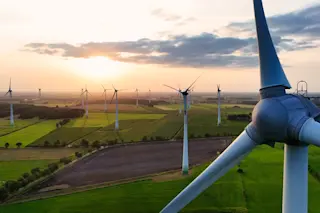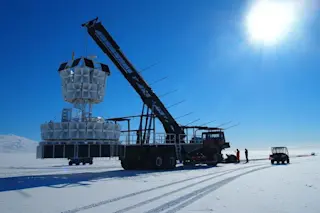An undergraduate student at Penn State University discovered a new approach to a century-old problem, and in doing so made it easier for engineers to develop more efficient wind turbines.
The real world is frighteningly complex, and physicists like to start with this simplest approximation to the problem to make headway, and then add refinements as needed. In the case of wind turbines, the first attempt to determine their optimization was made by Hermann Glauert, a British aerodynamicist, in the early 20th century.
Optimization is crucial for wind turbines because for a given set of materials with certain properties like stiffness and weight, we want the turbines to get the maximum amount of electricity possible out. Glauert’s solution gave an answer, but it essentially assumed that wind turbines were solid discs and did not respond to the myriads of forces that they encountered in actual operation.
Since then there have been many attempts to refine Glauert’s model, but recently an undergraduate student at Pennsylvania State, Divya Tyagi, made a radical leap. In a paper appearing in Wind Energy Science, Tyagi found a much simpler way to add more complexity and more sophistication to the solution.
Calculus of Variations
Tyagi employed a technique called the calculus of variations. In normal calculus, you take some unknown parameter of the problem and vary it to see how the problem responds. This can help you find optimal solutions for that problem. But what if you don't know the problem ahead of time?
That's where the calculus of variations come in. Instead of varying a single perimeter of the problem, you vary the entire mathematical function that describes whole range of possible problems. The goal is to end up with a single equation that is the optimal answer for as broad a class of situations as possible.
Read More: Mathematical Solution Found For Jigsaw Problem We've All Faced
Improving Wind Turbines
Using this technique, Tyagi rewrote Glauert’s original solution. Plus, it allowed Tyagi to extend that solution to more complicated scenarios. In particular, Tyagi included the effects of the air wind blowing on the rotor turbine blades, known as downwind thrust. Tyagi’s result also includes the effects of the rotor blades bending at their roots due to that wind pressure.
Tyagi was able to create a derive a single equation that folds in multiple components that matter to real life turbines. This straightforward solution allows engineers out in the field to design as efficient a turbine as possible. This is absolutely crucial for wind power, as even a one percent improvement can make a tremendous difference.
And, as an added bonus, wind turbines aren’t solid discs anymore.
Read More: Low-Toxic Technique Could Help Recycle Wind Turbine Blades
Article Sources
Our writers at Discovermagazine.com use peer-reviewed studies and high-quality sources for our articles, and our editors review for scientific accuracy and editorial standards. Review the sources used below for this article:
European Academy of Wind Energy. Glauert's optimum rotor disk revisited – a calculus of variations solution and exact integrals for thrust and bending moment coefficients
Journal of Aeronautical History. Hermann Glauert FRS, FRAeS (1892 – 1934)
Springer Nature. A History of the Calculus of Variations from the 17th through the 19th Century















